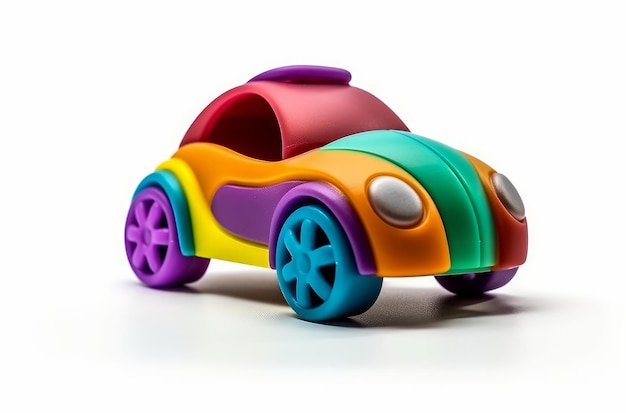
Idea Generation: The design process begins with brainstorming and conceptualizing the vehicle. Designers consider current trends, market demand, and potential themes.
Research: Extensive research on the specific vehicle type is conducted, including its history, specifications, and unique features to ensure accuracy.
2. Sketching and Initial Designs
Hand Sketches: Initial ideas are often sketched by hand to explore various design possibilities and aesthetics.
Digital Sketching: These sketches are then digitized using graphic design software, allowing for more precise adjustments and refinements.
3. CAD Modeling
3D Modeling: Designers create detailed 3D models using Computer-Aided Design (CAD) software. This stage involves building the vehicle�s structure, components, and intricate details.
Simulation and Analysis: The digital model is analyzed for functionality, stability, and feasibility. Simulations can test how parts fit together and identify potential issues before physical production.
4. Prototype Creation
Rapid Prototyping: Using techniques like 3D printing or CNC machining, physical prototypes of the vehicle are created from the CAD models. These prototypes allow designers to evaluate the model in real life.
Material Testing: Different materials are tested to determine the best options for casting, durability, and detail fidelity.
5. Evaluation and Refinement
Review and Feedback: The prototype is reviewed by the design team and other stakeholders. Feedback is gathered regarding the accuracy, aesthetics, and functionality of the model.
Iterative Improvements: Based on feedback, the design is iteratively refined. This may involve several rounds of prototyping and adjustments to perfect the model.
6. Detailed Engineering
Part Separation: The vehicle is broken down into individual parts for molding and casting. Each part is meticulously designed to ensure they fit together seamlessly.
Assembly Planning: Plans for the assembly process are developed, considering how each part will be connected and secured.
7. Final Prototyping
Pre-Production Prototype: A final prototype, often called a pre-production prototype, is created to validate the design before mass production. This prototype is as close to the final product as possible.
Quality Check: The pre-production prototype undergoes rigorous quality checks to ensure it meets all design specifications and standards.
8. Documentation and Approval
Technical Documentation: Detailed technical drawings and documentation are prepared, outlining specifications, materials, and assembly instructions.
Approval Process: The final design is submitted for approval from management, licensing bodies (if applicable), and any other relevant authorities.
9. Transition to Production
Tooling Design: Once approved, the design is used to create the molds and tooling required for mass production.
Production Planning: Plans for the production process, including timelines, resource allocation, and logistics, are developed to ensure efficient manufacturing.
This thorough design and prototyping process ensures that the diecast and toy vehicles are not only accurate and detailed but also feasible for mass production, meeting both aesthetic and functional standards.




